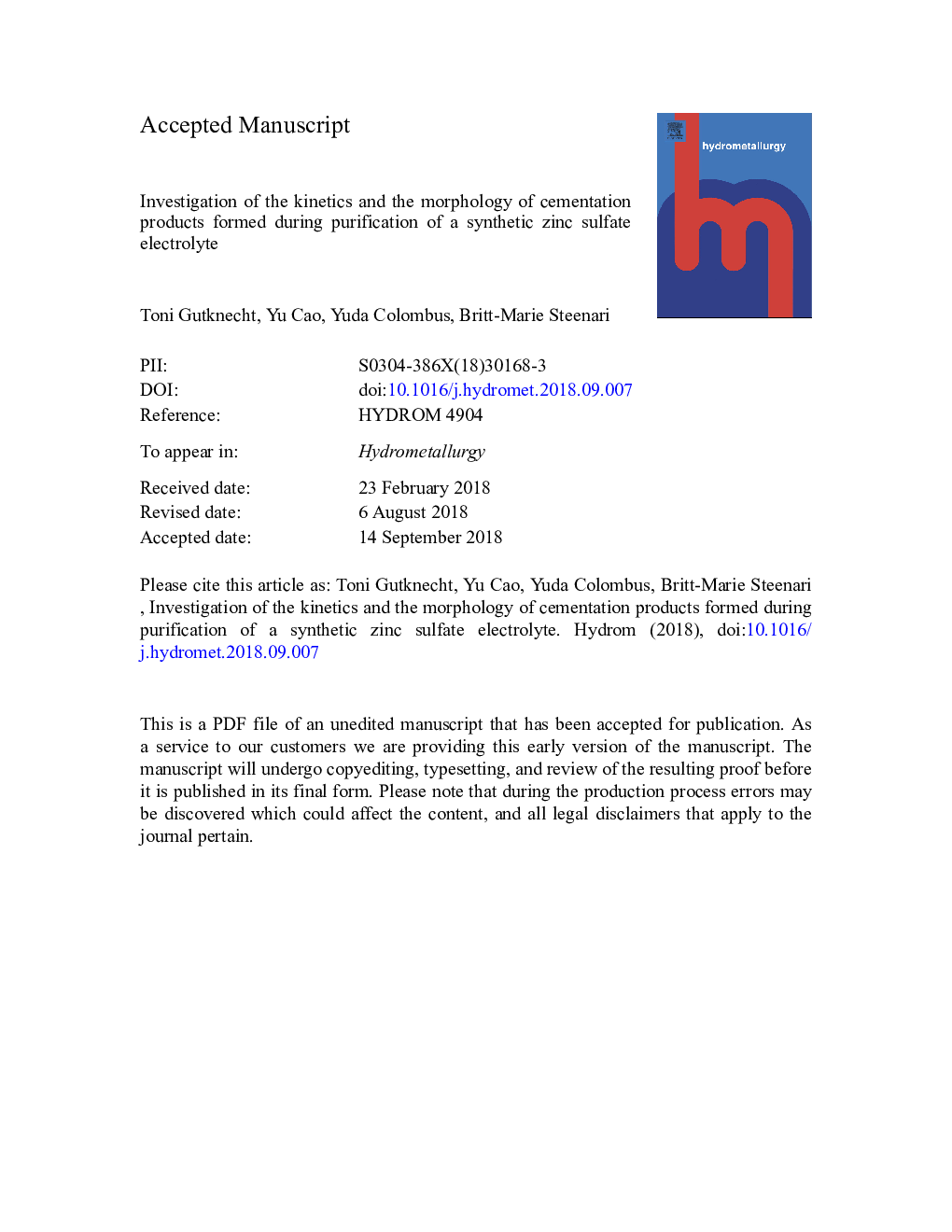| Article ID | Journal | Published Year | Pages | File Type |
|---|---|---|---|---|
| 11031693 | Hydrometallurgy | 2018 | 21 Pages |
Abstract
In zinc production, the purity of incoming zinc solution is of great importance. The presence of cobalt in the electrolyte used for zinc production lowers the current efficiency of zinc deposition and affects the purity of the zinc product. For this reason, cobalt must be removed from the electrolyte prior to zinc electrowinning. Cobalt removal is commonly achieved by the addition of metallic zinc dust through a process called cementation. The mechanism by which cementation occurs is not well understood. Parameters, such as cementation time, temperature, solution pH, concentration of activators, concentration of zinc ions in the electrolyte were investigated in this study. It was concluded that cobalt cementation could be described by a first order rate equation with an activation energy of 45â¯kJ/mol. Temperature played a significant role on the kinetics while the presence of hydrogen, intermediate compound formation, and zinc ions inhibited the cobalt cementation. Cu/Sb activators were cemented within the first 90â¯s and gave synergistic effect on cobalt cementation. Surface compounds on the cementation product were identified as mainly Zn(OH)2 and ZnSO4. Redissolution of cobalt did not occur from cemented cobalt but from dissolution of intermediate Co(OH)2 and CoSO4 salts.
Related Topics
Physical Sciences and Engineering
Chemical Engineering
Chemical Engineering (General)
Authors
Toni Karlsson, Yu Cao, Yuda Colombus, Britt-Marie Steenari,
